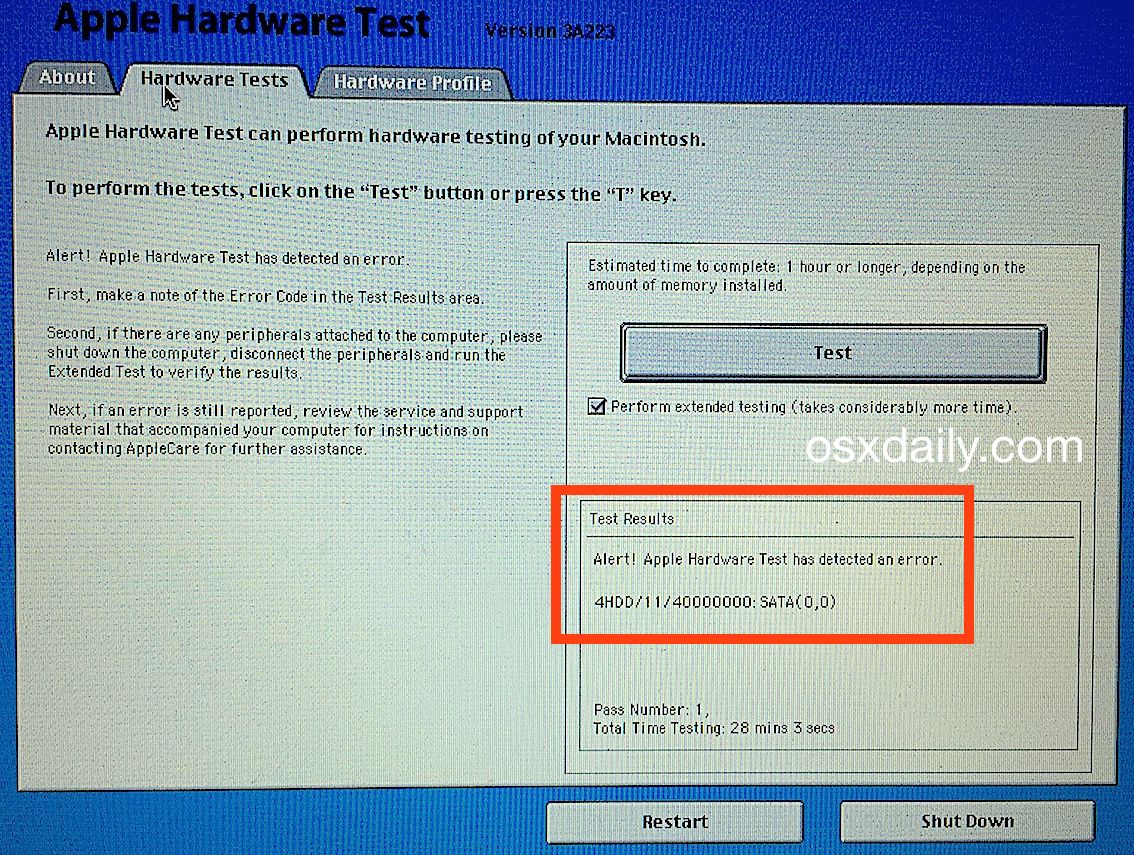

- #MAC DIAGNOSTIC BOOT MAC OS X#
- #MAC DIAGNOSTIC BOOT INSTALL#
- #MAC DIAGNOSTIC BOOT MAC#
- #MAC DIAGNOSTIC BOOT WINDOWS#
NOTE A knowledge of bash and the command-line (in general) is recommended.
#MAC DIAGNOSTIC BOOT MAC#
Verbose mode exits automatically when your mac finishes booting. It will contain information important to startup, allowing you to diagnose startup problems by seeing any errors that may be occurring during startup. A terminal-like interface will appear while booting.
#MAC DIAGNOSTIC BOOT WINDOWS#
Very similar to Windows Safe Mode a great way to troubleshoot OSX applications and extensions that aren't working properly. (Allows you to transfer files to and from your machine with.
puts your Mac into Target Disk Mode, effectively turning your computer into a large removable flash drive. You can alternatively use the Alt+ N keys during startup to start from a NetBoot server using the default boot image provided. if your setup includes a compatible network server (NetBoot), you can hold down the said key during boot to attempt a network boot. May also allow you to boot to a USB, but that's just a conjecture. This will load the boot menu allowing you to boot to a different operating system partition you may have installed on your hard drive. Hold the keys down until your computer restarts: release the keys after you hear the second startup sound. Clears the PRAM (parameter RAM) and NVRAM (non-volatile RAM): if either the PRAM or the NVRAM become corrupt, problems will ensue. Hold down Alt+ Cmd+ P+ R during startup. Option+ D can be used instead to try starting up Apple Hardware Test or Apple Diagnostics over the internet. Takes you to Apple's Hardware Test utility (or Apple Diagnostics, depending on Mac model). #MAC DIAGNOSTIC BOOT MAC OS X#
Mac OS X boot-time keyboard shortcuts (in no particular order): In addition, be sure to run and check the output of sudo dmesg | less: in my experience, if your system is experiencing problems, there's a high likelihood that dmesg's output will shed light on the situation.
see man page for more details: man memtesterĪlso, while this may sound super silly, I'd invest some time in checking the contents of your systems' logs, like tail /var/log/system.log, however, if I were you I'd check everything in /var/log just to make sure that you aren't missing anything. 
#MAC DIAGNOSTIC BOOT INSTALL#
install via brew: brew install memtester. Based on the previously mentioned memtest86. So you're on your own.Ĭheck out for other applications of a diagnostic/forensic nature I couldn't find much in the App Store with a few quick searches, but I do know of a couple different RAM diagnostic utilities, however, all of them require the use of a USB or a floppy or some other media type that can be booted into while I have experience with at least one of these, I have never used any of these under Mac OS X. Lots of statistics and info presented in a take your time kinda way.  Much nicer UI than SMARTReporter, feels much cleaner and less in your face. Install via brew: brew install smartmontools. (Check man page for usage details: man smartctl) primarily command-line only, GUI depends on the X Server,but even if you do have XQuartz installed, GUI doesn't show up. User Interface is kinda compact (feels a bit overwhelming with everything squished together). In addition, some hardware components such as your system's PSU (power supply unit) are best checked with specialized electrical equipment designed to check for faults in your PSU, such as your PSU is no longer capable of sustaining the level of Watts your system requires. So while it may seem like a good idea to try to find a really generalized and versatile hardware diagnostics app, you'll probably be better off with getting smaller more specialized apps that are designed to only check one to a few of your system's hardware components.
Much nicer UI than SMARTReporter, feels much cleaner and less in your face. Install via brew: brew install smartmontools. (Check man page for usage details: man smartctl) primarily command-line only, GUI depends on the X Server,but even if you do have XQuartz installed, GUI doesn't show up. User Interface is kinda compact (feels a bit overwhelming with everything squished together). In addition, some hardware components such as your system's PSU (power supply unit) are best checked with specialized electrical equipment designed to check for faults in your PSU, such as your PSU is no longer capable of sustaining the level of Watts your system requires. So while it may seem like a good idea to try to find a really generalized and versatile hardware diagnostics app, you'll probably be better off with getting smaller more specialized apps that are designed to only check one to a few of your system's hardware components. 
The likelihood that a single tool or utility will provide all of the diagnostic capabilities that you are looking for is very slim if you do happen to find such a utility, there's a decent chance that its support for said capabilities will be shallow.








 0 kommentar(er)
0 kommentar(er)
